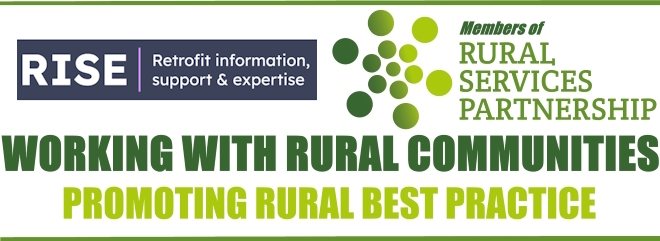T: 01822 851370 E: [email protected]
Resident Engagement And Retrofit Projects – RISE Support To Boost Your Engagement Activity
 When a local authority or social housing provider is planning any form of improvements to their housing stock, engagement with their residents is always a vital consideration. This is especially the case for any retrofit activity, where changes to the property will need the full support of residents to ensure success. Rural communities also present additional challenges, which need to be considered to ensure no one is excluded.
When a local authority or social housing provider is planning any form of improvements to their housing stock, engagement with their residents is always a vital consideration. This is especially the case for any retrofit activity, where changes to the property will need the full support of residents to ensure success. Rural communities also present additional challenges, which need to be considered to ensure no one is excluded.
With this in mind, Retrofit Information, Support and Expertise (RISE) has launched a new training course and supporting set of resources, to help all those involved in the planning and delivery of domestic retrofit projects to upskill and feel completely confident when approaching engagement activities.
The course – Resident Engagement Bootcamp is an online training programme, held over two days (April 14th and 15th). It which will cover topics customer journey mapping, selecting the right tools and methods and identifying stakeholders.
Registrations for this course, which is fully funded by the Department for Energy Security and Net Zero, is available to book now (places are limited)
We spoke to Claire Brown, from the RISE Learning and Development team, on all things resident engagement:
Why is resident engagement critical to the success of a retrofit project?
Resident engagement is important to any retrofit project, because without the involvement of people, it's just a building. If you’re doing work on people’s homes to improve energy efficiency and reduce carbon emissions, you've got to put people at the heart of it.
So resident engagement should start at the very beginning of a project, and it doesn't just end when the contractors finish. Residents have to be engaged in the process up until the point that everyone is happy and content in their home that has been upgraded for them.
What tactics can people use to put residents at the heart of their retrofit project?
The key is to make sure that you really listen to people, and work to address some of their concerns and their needs.
Some brilliant examples we've seen include face-to-face engagement; literally going from one home to another to talk to people, allowing residents the time to express their concerns and be listened to. It’s also important to make the most of having trusted voices in communities, who can help you to plan and deliver the best programme of engagement.
We’ve also seen things like retrofit buses going to rural locations, showing them what some of the retrofit measures, like external wall insulation might look like.
Are there any special considerations for more vulnerable communities?
It is very important to consider your most vulnerable communities. Some people might be nervous of changes being made to their homes, may feel more vulnerable through the process, or language may be a barrier. In these cases, it’s even more important to start the engagement process early and be open, honest, clear and transparent in what you're doing. Our Resident Engagement Toolkit shares some practical ways that you can address this.
What would you recommend to anyone planning resident engagement for a retrofit project?
If you are new to retrofit and resident engagement, I would really advise you to sign up to the RISE newsletter to keep up to date with any information that you might need, whether that is the RISE Podcast or Masterclasses. Then I would just suggest to sign-up for as many sessions as you possibly can.



